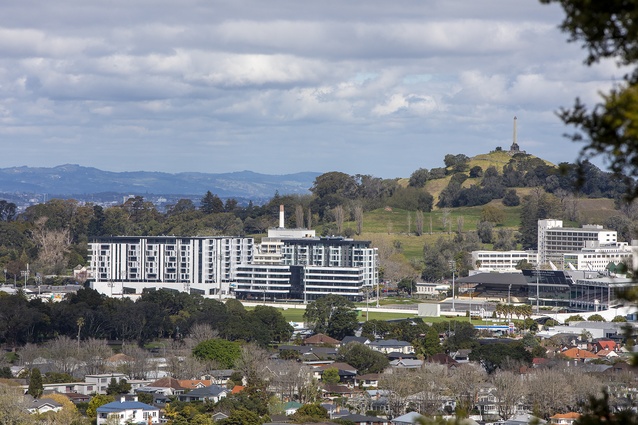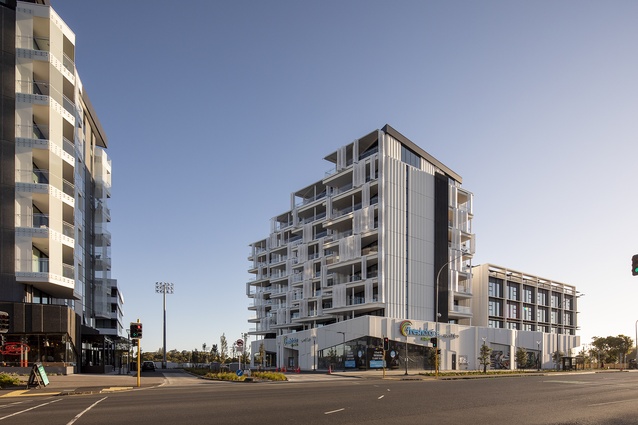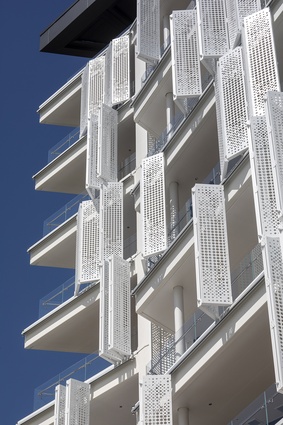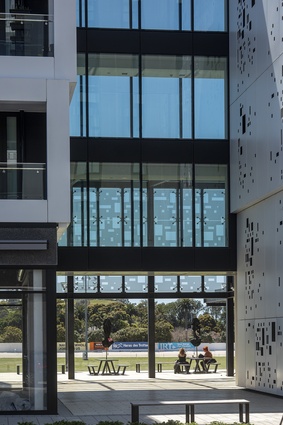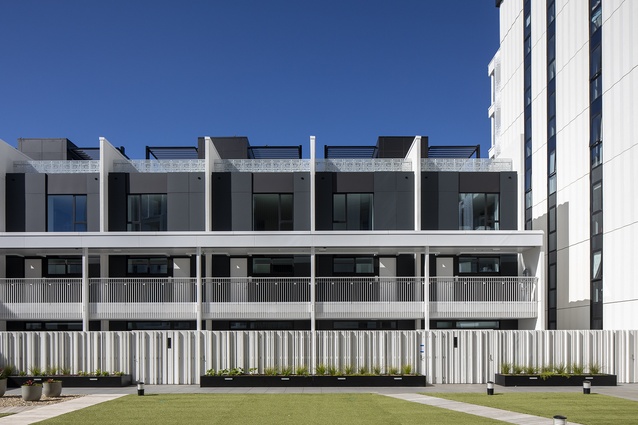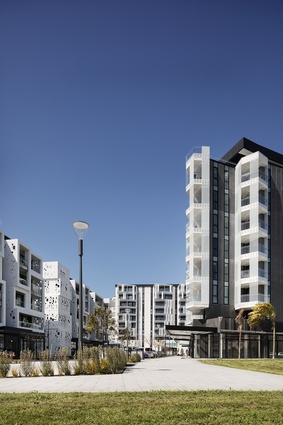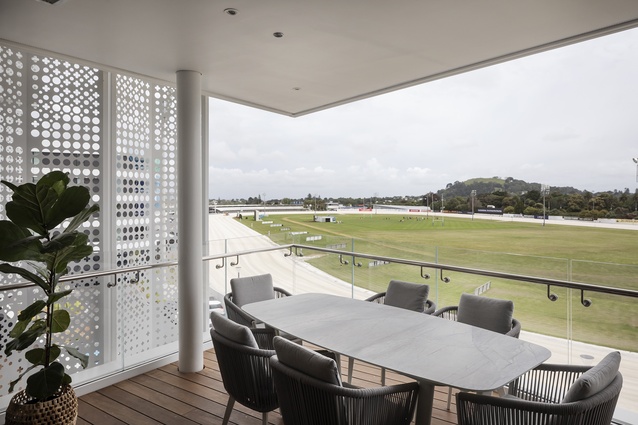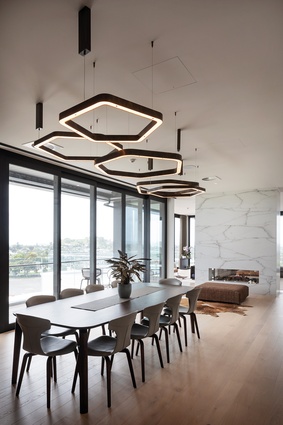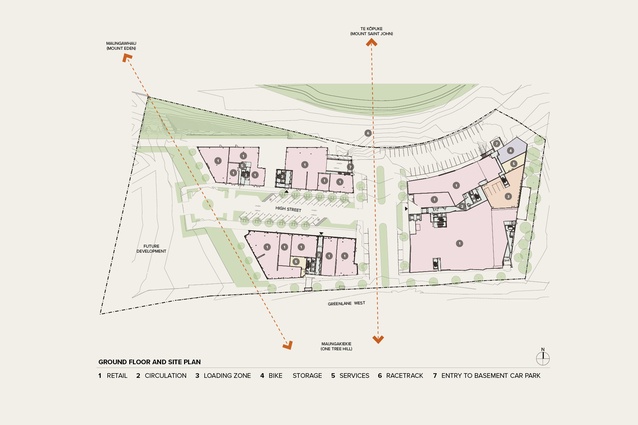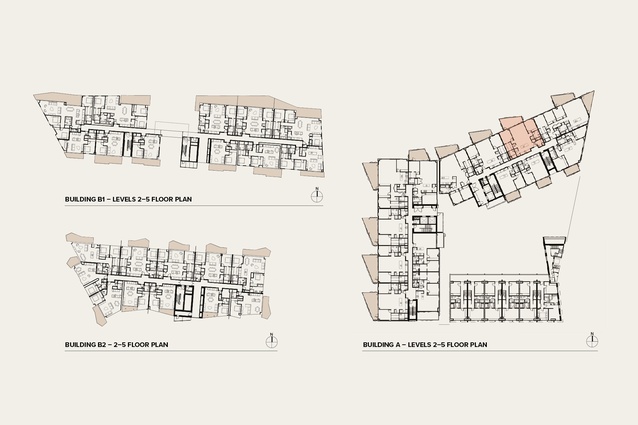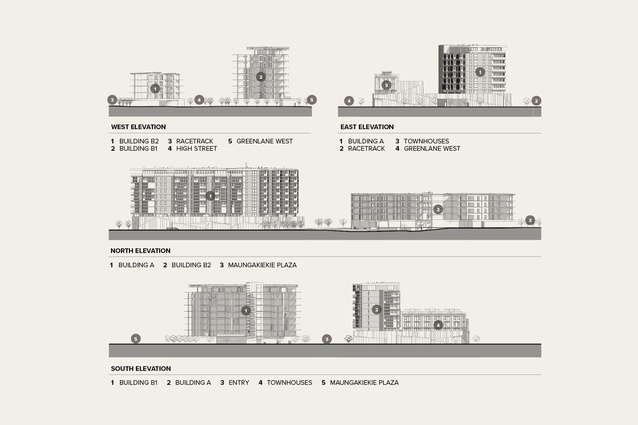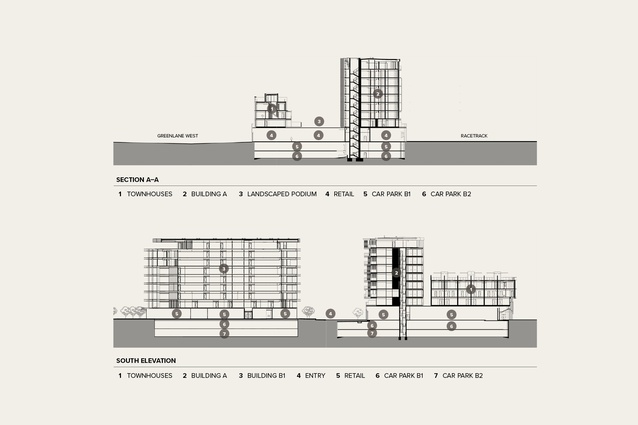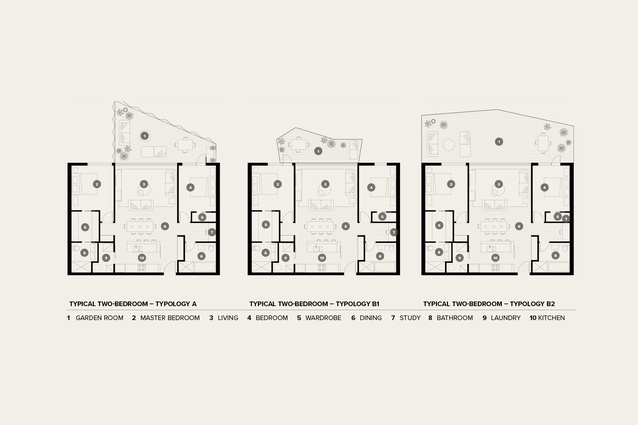Grandstand living
Chris Barton visits Alexandra Park’s 46,600m2 mixed-use development by RTA Studio in association with Sydney-based architects DJRD Architects and explores the art of apartment dwelling beside the Auckland Trotting Club’s racecourse.
Not balconies, covered decks or verandahs. Garden rooms. Call them what you will, they’re undoubtedly the distinctive feature of the 246 high-quality apartments spread over three multilevel blocks beside Greenlane West Road, now home to some 700 residents. That and the fact that half of these rooms overlook the Alexandra Park horse-racing track, featuring floodlit weekly harness racing on Thursday or Friday evenings.
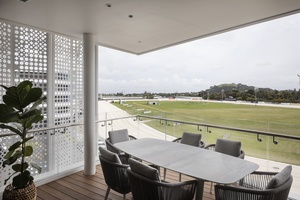
In this context, ‘garden room’ seems a misnomer. Trackside, the outside rooms feel like you’re in your own corporate box at a stadium, particularly so when the racecourse floodlights are on full. The large, covered balconies erupt in a frenzy of white patterning all over the three buildings’ façades. An array of screen designs – various combinations of fixed, white fritted glass panels and balustrades, and white perforated aluminium screens that slide and bifold – serve to partially enclose the balconies, providing wind and rain protection plus shade and privacy.
Using perforated patterns as façade decoration is something of a hallmark of RTA Studio, first used in 2016 on the façade of its white Mackelvie Street shops off Ponsonby Road. In that case, it derived from a floral damask of the type that was popular in Edwardian and Victorian times, especially on wallpapers, but which originated from Byzantine and Islamic weaving in the Middle Ages. There’s a similar contextual referencing here, with the abstract geometric fritting and perforations of the balcony screens perhaps paying homage to the fretwork of grandstands and Victorian villas of the surrounding area.
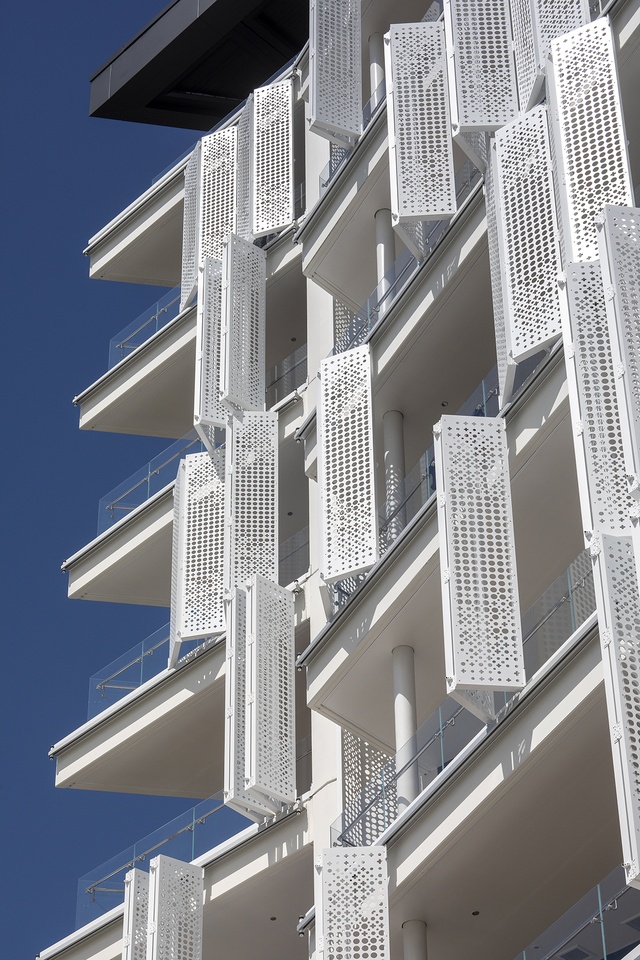
The outside rooms are also generous, ranging, for example, from 18m2 to 25m2, with 2.7m floor-to-ceiling in the largest of the buildings. This is the 10-level, unimaginatively named ‘Building A’, which bookends to the east the other two blocks and, at its ground-floor retail podium, follows the curve of the racetrack. Many are also triangular-shaped, with the wider side having enough space for an outside dining table or two couches and, the narrower end, a barbecue or a couple of chairs. As RTA Studio principal Ben Hayes points out, the key idea is to provide a large-enough space to enable appreciation of the outside – a way to compensate for the lack of garden space that comes with apartment living. Not surprisingly, as well as outdoor furniture, many of the balconies feature potted-plant greenery.
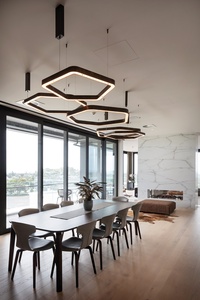
Apartment claustrophobia is also compensated for by beautifully thought out apartment layout and the view – trackside of the racetrack, which, as well as featuring harness racing, is the Auckland Blues’ training ground and hosts other events, such as Cirque du Soleil. The northern view also looks beyond to Auckland’s CBD and its maunga and, from the penthouses on level nine, panoramic views extend to both harbours. In the penthouses, floor-to-ceiling is 3m and space is not a problem. The apartments range in size from 279m2 to 349m2, and external balconies from 51m2 to 140m2. In 2016, they were priced at between $2.95m and $4.75m.
By way of comparison, in the same year: a one-bedroom, 70m2 (with a 5m2 deck) apartment in the complex was $720,000; a two-bedroom, two-bathroom (some with study area), 90–100m2 apartment (with a 10–27m2 deck) started at $975,000; and a three-bedroon, two-bathroom (some with study area) 129–133m2 apartment (with a 25–39m2 deck) started at $1.85 million. The mix of apartment types across the three blocks, all accessible from a central corridor, is 50 per cent two-bedroom, 25 per cent one-bedroom and 25 per cent three-bedroom.
While the Alexandra Park development can be seen as an exemplar for high-density, mixed-use living, even at 2016 prices – the project began in 2014 and finished in 2021 – it does little to help with the housing affordability crisis. The cheapest apartments ended up being on the south sides of the blocks but, through careful design, these make up just 14 per cent of the development. Building A also accommodates three levels of townhouses completing the frontage to Greenlane West and breaking down the scale of the development. To the north, the townhouses face out onto a shared landscaped plaza. Apartments are all naturally ventilated with additional mechanical fresh air because of the noisy location adjacent to Greenlane West. Heating and cooling are supplied by an individual heat pump system housed in vertical condenser farms, allowing individual controls to each apartment and negating the need for units on the balconies.
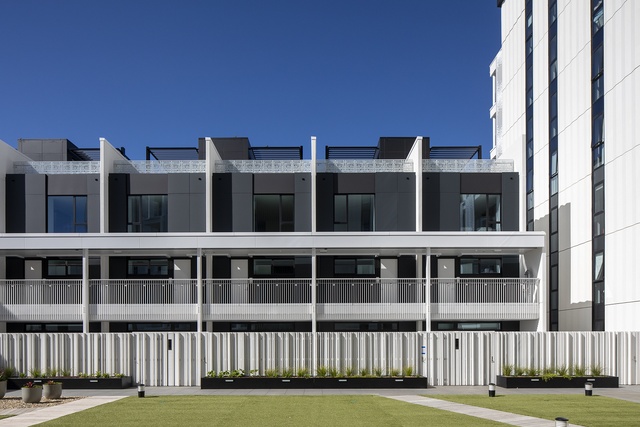
The arrangement of the three apartment blocks on the site is developed from an overall master plan of the entire 2.5 hectares owned by Auckland Trotting Club, developed with urban design firm Civitas, from Toronto. The next stage of development, which extends further along the Greenlane West boundary, is a 12-level, 193-apartment complex with five ground-floor retail spaces, Parkview on Cornwall, designed by Paul Brown and Associates.
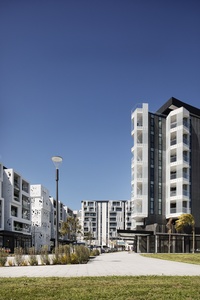
At eye level, the racecourse site offers views to Maungakiekie (One Tree Hill), Maungawhau (Mount Eden) and Te Kōpuke (Mount Saint John). At the western end of the site, two buildings separated by a new High Street run parallel to the racecourse track and Greenlane West. The building closest to the track is lower to maximise direct sunlight into the retail street and to provide more direct sunlight to the north-facing apartments of the rear building closest to the noisy road. To reduce the impact of this noise, the buildings are set 5m back from the Greenlane West boundary, creating a public pedestrian buffer to the busy road. The open public space at the western end of the two buildings creates a stunning view shaft linking Maungakiekie across the road in the adjacent Cornwall Park to Maungawhau viewed in the distance across the racecourse, providing a powerful visual reminder of the cultural significance of these maunga for Tāmaki Makaurau. The building closest to the racetrack is split by a central pathway at ground level leading to Sightline Green, an open space beside the track where people can sit on the lawn to watch the Friday-night racing. Most of the 5500m2 of ground-floor space is used for retail and includes restaurants and cafés, a FreshChoice supermarket and a gym. When I visit, the post-Covid slowdown effect is still evident, with several ground-floor tenancies yet to be occupied.
Perhaps the biggest surprise is the vast cavern of carparking found in a two-level basement beneath all the buildings and the internal High Street, holding more than 500 car parks. The first basement level is for public parking, for people using the site’s amenities, such as the supermarket, gym and restaurants. The second level of the basement is for use by the residents.
Seeing this massive excavation, now filled with concrete car parks, and considering the steel frames of all the buildings and their steel and concrete slab flooring, you know the embodied carbon and the CO2 emissions produced to make this edifice are massive. (Concrete generates roughly 8 per cent of global CO2 emissions.) There is much to admire about Alexandra Park’s style of apartment living combined with ground-floor retail and the high-quality amenity it provides. This is not, however, a building designed to reduce emissions and care for the planet. Architects should be thinking about not just an innovative approach to high density in the present but also the demands of a climate-challenged future.

